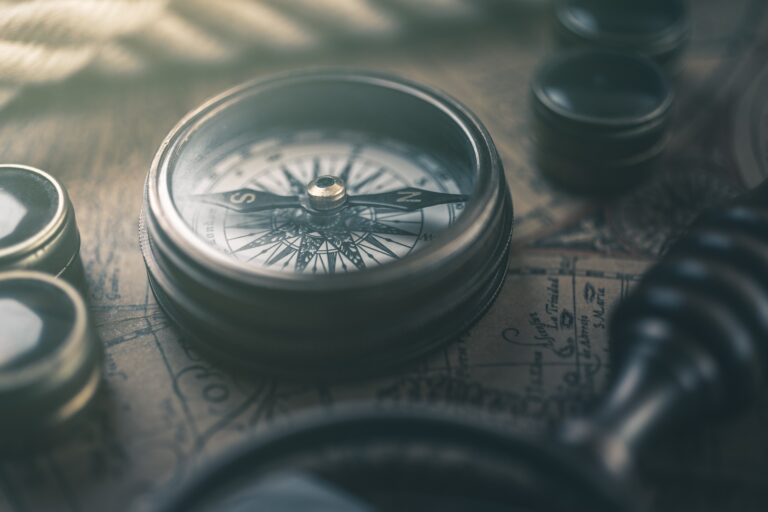Physics
Physics
Which of the following is a vector quantity?
- A) Speed
- B) Distance
- C) Displacement
- D) Time
- Answer: C) Displacement
Which of the following is the unit of force?
- A) Newton
- B) Joule
- C) Watt
- D) Pascal
- Answer: A) Newton
What is the acceleration due to gravity on the surface of the Earth?
- A) 7.8 m/s²
- B) 8.9 m/s²
- C) 9.8 m/s²
- D) 10.8 m/s²
- Answer: C) 9.8 m/s²
Which of the following laws is also known as the law of inertia?
- A) Newton’s First Law
- B) Newton’s Second Law
- C) Newton’s Third Law
- D) Law of Conservation of Energy
- Answer: A) Newton’s First Law
Which of the following is the SI unit of work?
- A) Joule
- B) Newton
- C) Watt
- D) Pascal
- Answer: A) Joule
What is the speed of light in a vacuum?
- A) 2.99 x 10⁸ m/s
- B) 3.00 x 10⁸ m/s
- C) 3.01 x 10⁸ m/s
- D) 3.02 x 10⁸ m/s
- Answer: B) 3.00 x 10⁸ m/s
What type of mirror is used in car headlights?
- A) Plane mirror
- B) Concave mirror
- C) Convex mirror
- D) Parabolic mirror
- Answer: B) Concave mirror
Which of the following is not a fundamental force?
- A) Gravitational force
- B) Electromagnetic force
- C) Strong nuclear force
- D) Centrifugal force
- Answer: D) Centrifugal force
What is the formula for kinetic energy?
- A) KE=12mv2KE = \frac{1}{2}mv²KE=21mv2
- B) KE=mvKE = mvKE=mv
- C) KE=mgKE = mgKE=mg
- D) KE=12mvKE = \frac{1}{2}mvKE=21mv
- Answer: A) KE=12mv2KE = \frac{1}{2}mv²KE=21mv2
Which phenomenon explains the splitting of light into its constituent colors?
- A) Reflection
- B) Refraction
- C) Diffraction
- D) Dispersion
- Answer: D) Dispersion
Which of the following is the unit of electrical resistance?
- A) Volt
- B) Ampere
- C) Ohm
- D) Watt
- Answer: C) Ohm
What is the potential difference across the ends of a conductor when a current of 1 ampere flows through it with a resistance of 1 ohm?
- A) 1 Volt
- B) 2 Volts
- C) 3 Volts
- D) 4 Volts
- Answer: A) 1 Volt
What type of lens is used to correct myopia?
- A) Convex lens
- B) Concave lens
- C) Cylindrical lens
- D) Spherical lens
- Answer: B) Concave lens
Which of the following is not a renewable source of energy?
- A) Solar energy
- B) Wind energy
- C) Fossil fuels
- D) Hydropower
- Answer: C) Fossil fuels
What is the unit of frequency?
- A) Hertz
- B) Joule
- C) Newton
- D) Watt
- Answer: A) Hertz
Which law states that the current flowing through a conductor is directly proportional to the voltage across it, provided the temperature remains constant?
- A) Ohm’s Law
- B) Kirchhoff’s Law
- C) Faraday’s Law
- D) Ampere’s Law
- Answer: A) Ohm’s Law
Which of the following waves are used in SONAR?
- A) Radio waves
- B) Sound waves
- C) Microwaves
- D) Infrared waves
- Answer: B) Sound waves
What is the formula for pressure?
- A) P=FAP = \frac{F}{A}P=AF
- B) P=F⋅AP = F \cdot AP=F⋅A
- C) P=AFP = \frac{A}{F}P=FA
- D) P=F+AP = F + AP=F+A
- Answer: A) P=FAP = \frac{F}{A}P=AF
Which of the following is a non-conservative force?
- A) Gravitational force
- B) Electrostatic force
- C) Frictional force
- D) Magnetic force
- Answer: C) Frictional force
What is the charge of an electron?
- A) 1.6×10−191.6 \times 10^{-19}1.6×10−19 Coulombs
- B) −1.6×10−19-1.6 \times 10^{-19}−1.6×10−19 Coulombs
- C) 1.6×10191.6 \times 10^{19}1.6×1019 Coulombs
- D) −1.6×1019-1.6 \times 10^{19}−1.6×1019 Coulombs
- Answer: B) −1.6×10−19-1.6 \times 10^{-19}−1.6×10−19 Coulombs
Which physical quantity is measured in pascals?
- A) Force
- B) Pressure
- C) Work
- D) Power
- Answer: B) Pressure
Which of the following is the unit of power?
- A) Joule
- B) Newton
- C) Watt
- D) Pascal
- Answer: C) Watt
What is the formula for calculating work done?
- A) W=F×dW = F \times dW=F×d
- B) W=FdW = \frac{F}{d}W=dF
- C) W=dFW = \frac{d}{F}W=Fd
- D) W=F+dW = F + dW=F+d
- Answer: A) W=F×dW = F \times dW=F×d
Which of the following laws states that the volume of a gas is inversely proportional to its pressure at constant temperature?
- A) Boyle’s Law
- B) Charles’s Law
- C) Avogadro’s Law
- D) Gay-Lussac’s Law
- Answer: A) Boyle’s Law
What is the wavelength of light with a frequency of 5×10145 \times 10^{14}5×1014 Hz? (Speed of light = 3×1083 \times 10^83×108 m/s)
- A) 600 nm
- B) 500 nm
- C) 400 nm
- D) 300 nm
- Answer: B) 600 nm
Which of the following particles is found in the nucleus of an atom?
- A) Electron
- B) Proton
- C) Neutron
- D) Both B and C
- Answer: D) Both B and C
What is the unit of electrical capacitance?
- A) Ohm
- B) Farad
- C) Coulomb
- D) Henry
- Answer: B) Farad
Which of the following materials is a good conductor of electricity?
- A) Wood
- B) Rubber
- C) Copper
- D) Glass
- Answer: C) Copper
What is the name of the device used to measure electric current?
- A) Voltmeter
- B) Ammeter
- C) Ohmmeter
- D) Wattmeter
- Answer: B) Ammeter
Which of the following is an example of a scalar quantity?
- A) Velocity
- B) Acceleration
- C) Force
- D) Temperature
- Answer: D) Temperature
Which physical principle explains the buoyant force experienced by objects in a fluid?
- A) Bernoulli’s Principle
- B) Pascal’s Principle
- C) Archimedes’ Principle
- D) Boyle’s Law
- Answer: C) Archimedes’ Principle
What is the angle between the force and displacement when the work done is zero?
- A) 0 degrees
- B) 45 degrees
- C) 90 degrees
- D) 180 degrees
- Answer: C) 90 degrees
Which type of electromagnetic radiation has the shortest wavelength?
- A) Gamma rays
- B) X-rays
- C) Ultraviolet
- D) Infrared
- Answer: A) Gamma rays
What is the term for the number of waves passing a point per unit time?
- A) Wavelength
- B) Frequency
- C) Amplitude
- D) Period
- Answer: B) Frequency
Which device converts electrical energy into mechanical energy?
- A) Generator
- B) Transformer
- C) Motor
- D) Rectifier
- Answer: C) Motor
Which law states that the pressure exerted by a fluid at equilibrium in a given container depends on the height of the fluid column?
- A) Pascal’s Law
- B) Archimedes’ Law
- C) Bernoulli’s Law
- D) Boyle’s Law
- Answer: A) Pascal’s Law
What is the name of the force that opposes the relative motion of two surfaces in contact?
- A) Tension
- B) Normal force
- C) Friction
- D) Centripetal force
- Answer: C) Friction
Which type of current flows in only one direction?
- A) Alternating current (AC)
- B) Direct current (DC)
- C) Induced current
- D) Eddy current
- Answer: B) Direct current (DC)
What is the unit of magnetic field strength?
- A) Tesla
- B) Weber
- C) Gauss
- D) Henry
- Answer: A) Tesla
Which element is most commonly used in the construction of semiconductors?
- A) Silicon
- B) Carbon
- C) Germanium
- D) Tin
- Answer: A) Silicon
Which law explains the relationship between the current, voltage, and resistance in an electric circuit?
- A) Coulomb’s Law
- B) Ampere’s Law
- C) Ohm’s Law
- D) Faraday’s Law
- Answer: C) Ohm’s Law
What is the term for the bending of light as it passes from one medium to another?
- A) Reflection
- B) Refraction
- C) Diffraction
- D) Absorption
- Answer: B) Refraction
Which phenomenon demonstrates the wave nature of light?
- A) Photoelectric effect
- B) Compton effect
- C) Diffraction
- D) Pair production
- Answer: C) Diffraction
Which law of thermodynamics states that energy cannot be created or destroyed, only transformed?
- A) Zeroth Law
- B) First Law
- C) Second Law
- D) Third Law
- Answer: B) First Law
Which type of mirror is used to produce an enlarged virtual image?
- A) Plane mirror
- B) Concave mirror
- C) Convex mirror
- D) Parabolic mirror
- Answer: B) Concave mirror
What is the device used to store electric charge?
- A) Resistor
- B) Capacitor
- C) Inductor
- D) Transformer
- Answer: B) Capacitor
Which of the following is not an electromagnetic wave?
- A) Radio waves
- B) Microwaves
- C) Sound waves
- D) Infrared waves
- Answer: C) Sound waves
What is the phenomenon of splitting white light into its constituent colors called?
- A) Dispersion
- B) Diffraction
- C) Reflection
- D) Refraction
- Answer: A) Dispersion
Which scientist is known for the law of universal gravitation?
- A) Albert Einstein
- B) Isaac Newton
- C) Galileo Galilei
- D) Nikola Tesla
- Answer: B) Isaac Newton
Which principle explains why airplanes can fly?
- A) Pascal’s Principle
- B) Archimedes’ Principle
- C) Bernoulli’s Principle
- D) Boyle’s Law
- Answer: C) Bernoulli’s Principle
Which property of sound determines its pitch?
- A) Amplitude
- B) Frequency
- C) Wavelength
- D) Speed
- Answer: B) Frequency
What is the phenomenon where an object moving towards an observer has its light waves compressed?
- A) Doppler effect
- B) Redshift
- C) Blueshift
- D) Reflection
- Answer: C) Blueshift
Which device is used to convert mechanical energy into electrical energy?
- A) Motor
- B) Generator
- C) Transformer
- D) Rectifier
- Answer: B) Generator
Which of the following is a unit of inductance?
- A) Farad
- B) Henry
- C) Ohm
- D) Volt
- Answer: B) Henry
What is the name of the effect that occurs when a beam of light spreads out after passing through a small aperture?
- A) Refraction
- B) Reflection
- C) Diffraction
- D) Dispersion
- Answer: C) Diffraction
Which law states that the total electric flux through a closed surface is proportional to the enclosed electric charge?
- A) Gauss’s Law
- B) Ampere’s Law
- C) Faraday’s Law
- D) Ohm’s Law
- Answer: A) Gauss’s Law
What is the name of the process by which a nucleus splits into two or more smaller nuclei?
- A) Fusion
- B) Fission
- C) Ionization
- D) Radioactive decay
- Answer: B) Fission
Which quantity measures the amount of matter in an object?
- A) Weight
- B) Mass
- C) Volume
- D) Density
- Answer: B) Mass
Which type of electromagnetic radiation is used in medical imaging to view bones?
- A) Ultraviolet
- B) X-rays
- C) Gamma rays
- D) Infrared
- Answer: B) X-rays
Which property of a wave determines its energy?
- A) Amplitude
- B) Frequency
- C) Wavelength
- D) Speed
- Answer: B) Frequency
Which principle states that pressure applied to a confined fluid is transmitted undiminished in all directions?
- A) Pascal’s Principle
- B) Archimedes’ Principle
- C) Bernoulli’s Principle
- D) Boyle’s Law
- Answer: A) Pascal’s Principle
What is the phenomenon where light waves change direction as they pass through a boundary between different mediums?
- A) Reflection
- B) Refraction
- C) Diffraction
- D) Dispersion
- Answer: B) Refraction
Which law states that the force between two charges is directly proportional to the product of their charges and inversely proportional to the square of the distance between them?
- A) Ohm’s Law
- B) Coulomb’s Law
- C) Faraday’s Law
- D) Ampere’s Law
- Answer: B) Coulomb’s Law
What is the term for the ability of a material to return to its original shape after being deformed?
- A) Plasticity
- B) Elasticity
- C) Viscosity
- D) Ductility
- Answer: B) Elasticity
Which unit is used to measure luminous intensity?
- A) Candela
- B) Lux
- C) Lumen
- D) Watt
- Answer: A) Candela
Which physical quantity is conserved in an elastic collision?
- A) Kinetic energy
- B) Momentum
- C) Both A and B
- D) Neither A nor B
- Answer: C) Both A and B


